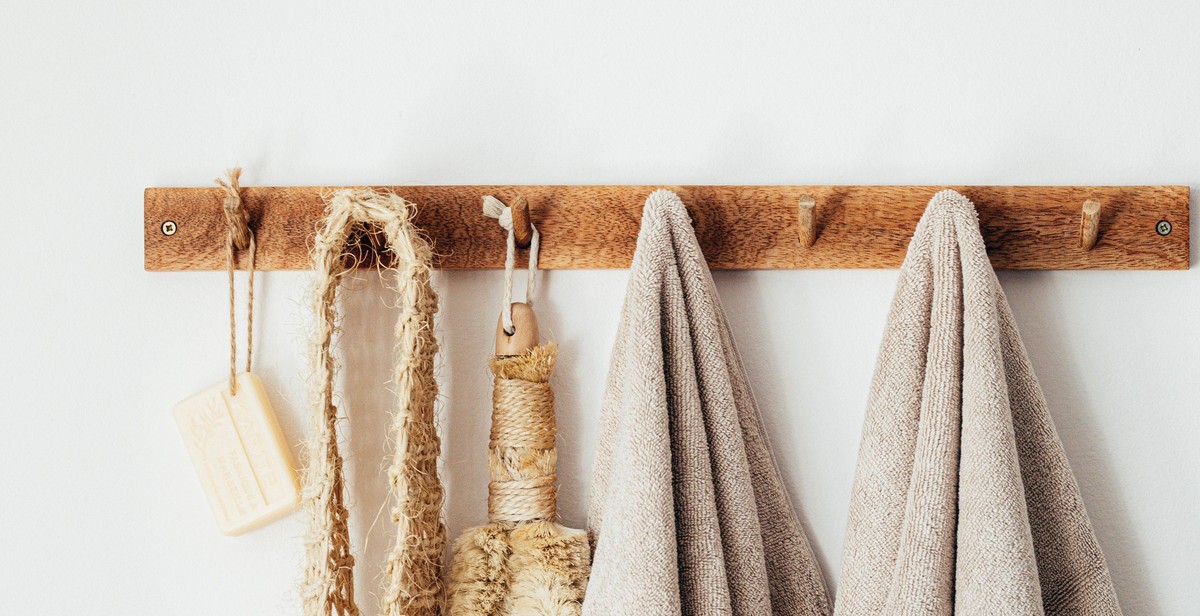How to Incorporate Meditation into Your Daily Routine
Meditation is a powerful tool that can help you to reduce stress, improve your mental clarity, and boost your overall well-being. However, many people struggle to find the time or motivation to meditate regularly. In this article, we will explore some simple yet effective ways to incorporate meditation into your daily routine.
1. Start Small
If you are new to meditation, it is important to start small and gradually increase the amount of time you spend meditating. Begin with just a few minutes each day and gradually work your way up to longer sessions.
2. Find a Quiet and Comfortable Space
It is important to find a quiet and comfortable space where you can practice meditation without distractions. This could be a spare room in your home, a quiet corner of your garden, or even a local park.
3. Use Guided Meditations
If you find it difficult to meditate on your own, consider using guided meditations. There are many great apps and websites that offer guided meditations for free or at a low cost.
4. Make Meditation a Habit
One of the keys to incorporating meditation into your daily routine is to make it a habit. Try to meditate at the same time each day, such as first thing in the morning or before bed.
5. Be Patient and Persistent
Finally, it is important to be patient and persistent when incorporating meditation into your daily routine. It may take some time to see the benefits, but with regular practice, you will begin to notice a positive change in your mental and emotional well-being.

Why Meditate?
There are numerous benefits to meditation that make it a worthwhile practice to incorporate into your daily routine. Here are some of the key reasons why you should consider meditating:
1. Reduces Stress and Anxiety
Meditation has been shown to reduce stress and anxiety levels by decreasing the production of cortisol, the hormone responsible for stress. Regular meditation practice can also help you develop coping mechanisms to deal with stressful situations in a more calm and centered way.
2. Improves Focus and Concentration
Studies have found that meditation can improve focus and concentration by increasing gray matter in the brain, which is responsible for information processing. Meditation also helps to train the brain to stay focused on the present moment, which can improve productivity and performance.
3. Enhances Emotional Well-being
Meditation can also improve emotional well-being by increasing feelings of happiness, compassion, and empathy. It can also help to reduce feelings of anger, depression, and loneliness.
4. Lowers Blood Pressure
Regular meditation practice has been shown to lower blood pressure, which can reduce the risk of heart disease and stroke.
5. Boosts Immune System
Meditation has been found to boost the immune system by increasing the activity of natural killer cells, which are responsible for fighting off viruses and cancer cells.
How Meditation Affects the Brain
Meditation has been found to physically change the brain in a number of ways. For example, it can increase the thickness of the prefrontal cortex, which is responsible for decision-making and problem-solving. Meditation can also decrease the size of the amygdala, which is responsible for the fight or flight response, and decrease the activity in the default mode network, which is responsible for mind-wandering and self-referential thinking.
Overall, meditation is a powerful tool for improving both physical and mental health. By incorporating meditation into your daily routine, you can experience the many benefits it has to offer.

Getting started with meditation
Meditation is an ancient practice that has been scientifically proven to have numerous benefits for both the mind and body. Incorporating meditation into your daily routine can help reduce stress, improve focus, and boost overall well-being. Here are some tips for getting started with meditation:
Setting a regular time
One of the keys to establishing a consistent meditation practice is to set aside a specific time each day for your practice. This can be first thing in the morning, during your lunch break, or before bed. Choose a time that works for you and commit to it.
Choosing a comfortable location
It’s important to find a quiet, comfortable location where you can meditate without distractions. This can be a spare room in your home, a quiet corner of your office, or even a nearby park. Make sure the space is clean and free from clutter, and consider using candles, incense, or other calming elements to enhance your meditation experience.
Selecting the right type of meditation
There are many different types of meditation, so it’s important to find the one that works best for you. Some popular types of meditation include:
- Mindfulness meditation: focuses on being present in the moment and observing your thoughts and feelings without judgment.
- Transcendental meditation: involves the use of a mantra or repeated word or phrase to help quiet the mind.
- Loving-kindness meditation: involves focusing on feelings of love and compassion towards yourself and others.
Experiment with different types of meditation to find the one that resonates with you. Remember, there’s no right or wrong way to meditate, so don’t be afraid to try new things and see what works best for you.

Tips for Incorporating Meditation into Your Daily Routine
Meditation is a powerful tool that can help you reduce stress, improve your focus, and enhance your overall well-being. But if you’re new to meditation, it can be challenging to know where to start. Here are some tips for incorporating meditation into your daily routine:
Start with Short Sessions
When you’re first starting with meditation, it’s essential to start with short sessions. Trying to meditate for an hour right off the bat can be overwhelming and discouraging. Instead, start with just five or ten minutes a day. You can gradually increase the length of your sessions as you become more comfortable.
Make it a Habit
The key to making meditation a part of your daily routine is to make it a habit. Try to meditate at the same time every day, so it becomes a natural part of your day. You can also create a designated meditation space in your home to help you get into the right mindset.
Use Guided Meditations
If you’re new to meditation, guided meditations can be an excellent way to get started. Guided meditations provide you with instructions and guidance as you meditate, making it easier to focus and stay present. There are many guided meditation apps and videos available online that you can use to help you get started.
Combine Meditation with Other Activities
You can also try combining meditation with other activities that you already enjoy. For example, you can meditate while taking a walk or while doing yoga. Combining meditation with other activities can help you stay focused and make it easier to incorporate meditation into your daily routine.
- Start with short sessions
- Make it a habit
- Use guided meditations
- Combine meditation with other activities
By following these tips, you can start incorporating meditation into your daily routine and enjoy the many benefits it has to offer.

Overcoming Common Obstacles
Lack of Time
One of the most common obstacles to incorporating meditation into your daily routine is a lack of time. With busy work schedules, family responsibilities, and other commitments, it can be challenging to find time to meditate. However, there are several ways to overcome this obstacle:
- Start small: Begin by meditating for just a few minutes each day and gradually increase the time as you become more comfortable with the practice.
- Wake up earlier: Set your alarm for 10-15 minutes earlier each day and use that time to meditate before starting your day.
- Find pockets of time: Look for small pockets of time throughout your day, such as during your lunch break or while waiting for an appointment, to fit in a quick meditation session.
Difficulty Focusing
Another common obstacle to meditation is difficulty focusing. It can be challenging to quiet the mind and stay focused, especially for beginners. However, there are several techniques you can use to overcome this obstacle:
- Focus on your breath: Use your breath as an anchor to bring your attention back whenever your mind starts to wander.
- Use guided meditations: Guided meditations can be helpful for beginners as they provide a focal point and help keep your mind from wandering.
- Practice regularly: The more you practice, the easier it will become to focus and quiet your mind.
Frustration with Lack of Progress
It’s natural to want to see progress when starting a new practice, but it’s important to remember that meditation is a journey, and progress may not always be visible right away. Here are some tips for overcoming frustration with a lack of progress:
- Be patient: Meditation is a practice that requires patience and dedication. Don’t expect to see results immediately.
- Set realistic expectations: Don’t set unrealistic goals for yourself, such as meditating for an hour every day. Start small and gradually increase your practice as you become more comfortable.
- Focus on the process, not the outcome: Instead of focusing on progress, focus on the process of meditation and the benefits it brings, such as increased relaxation and reduced stress.

Conclusion
Integrating meditation into your daily routine can be life-changing. It can help you manage stress, improve your focus and concentration, and enhance your overall well-being.
Remember, meditation is a practice, and it takes time and dedication to reap the benefits. Start small, with just a few minutes a day, and gradually increase your meditation time as you become more comfortable.
There are many different types of meditation, so experiment until you find the one that works best for you. Some people prefer guided meditations, while others enjoy silent meditation. You may also want to try different positions, such as sitting or lying down, to find the one that is most comfortable for you.
It’s also important to create a space that is conducive to meditation. Find a quiet, peaceful place where you can sit comfortably and without distractions. You may want to use candles, incense, or other tools to help create a relaxing environment.
Finally, remember that meditation is a personal journey. Don’t compare your practice to others or judge yourself for not being “good enough.” Simply focus on your breath and allow yourself to be present in the moment.
- Start small and gradually increase your meditation time
- Experiment with different types of meditation and positions
- Create a peaceful space for meditation
- Focus on your breath and allow yourself to be present in the moment
With consistency and dedication, meditation can become an integral part of your daily routine, helping you to live a more mindful and fulfilling life.
